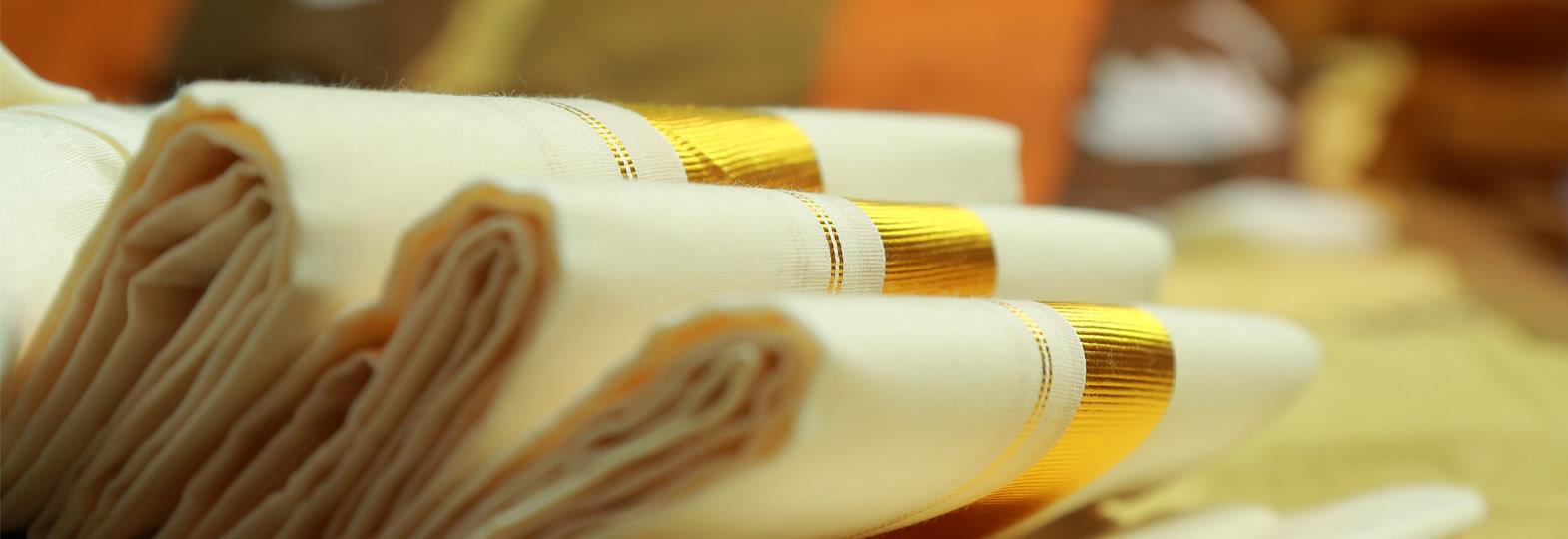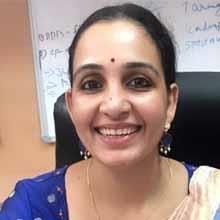The Indian handloom sector is a manifestation of the country’s rich cultural diversity and creative skills of its people, sustained by the transmission of traditional knowledge (Tk) from one generation to the next (MoT 2020). For centuries, Indian handloom fabrics have been celebrated around the world for their exceptional quality, finesse, and distinctiveness.
Due to the symbolic link between the loom, weaving techniques, and the weaver, the handloom clusters in South India are famous for their unique fabrics that have evolved over time. Although they faced fierce competition from Indian mill production and Chinese imports, the handloom industry in South India has managed to survive to this day. The state of Kerala is known for its fine count, texture, quality of cotton, comfort, natural colour and gold-bordered kasavu sarees and unbleached cotton crepe kora cloth (Kurup, K. K. N. 2008).
Balaramapuram, which is located in Kerala’s Thiruvanathapuram district, has a notable past as a hub for production of fine cotton handloom fabrics. As per the historical evidence, the artisans belonging to Saliya community crafted the exquisite ‘Mundum Neriyathum’ fabric for the Travancore Royal Family, which are fine-textured cloths used to cover the body. The traditional handloom products manufactured at Balaramapuram are veshti or dhoti, worn by adult men in combination with shirt, and Set Mundu (Mundum Neriyathum or Pudava and Kavani) draped by women, where Mundu or Pudava covering the lower body part and Neriyathu or Kavani draped over the blouse and upper part of the body. The speciality of these products is that they are woven with unbleached or kora white cotton yarn of finer counts.
What make Balaramapuram zari handloom unique?
The Balaramapuram zari handloom products are renowned for their intricate designs, superior craftsmanship, and use of natural materials. The cotton used for their weaving is of the finest quality with a thread count of 80s and 100s i.e., super combed cotton yarns. Natural grey thread is used for the wrap and no dyes are employed. Extra wrap and weft designs are created using pure gold zari and delicate half fine zari. Another significant skill in this cluster is ’lace weaving’, which requires human expertise. It involves distinctive technique in which each end is individually controlled by hand to interlace with the weft. In 2004, this cluster collaborated with the Indian and Chinese governments to create a unique limited-edition fabric called ‘Ayurvedic’. This fabric is dyed with a specially developed dye that provides medicinal properties, making it ideal for producing ‘Ayur Vastra’ or home linens. Other brands, such as ‘Bhoda’ have also experimented with these fabrics. The fine weaves of the fabrics are showcased by international brand Lecoanet Hemant under its brand name ‘Ayurganic’.
Investigation on authenticity also finds that the tradition of fine handloom weaving began with the Saliya community and spread to weavers in nearby areas, eventually evolving into five main producing centres of Kerala’s finest handlooms. Legend states that the 300-year-old craft of Blaramapuram started when a total of 7 weaver families were brought from Valliyoor and Nagarcoil by the Dewan of the then king Maharaja Balarama Varma for adorning the royal family with the traditional attire of Mundum Neriyathum in the finest weaves the communities produced. Also, technical uniqueness is another component which consists of two types of looms i.e., shuttle looms (fly and throw) and Pit looms in their production. Finally, evidence shows that Balaramapuram has always been an essential part of the cultural identity of people, from the paintings of Raja Ravi Varma to the costumes of Mohiniyattam dancers in Kerala. In 2006, the world-renowned designer Rahul Mishra showcased the weaves of Blaramapuram in his cotton collection, further elevating the celebrity status of this traditional craft. His esteemed clientele includes former Miss World Aishwarya Rai Bachchan, who recently commissioned her second custom made saree from Balaramapuram’s Kalakeli unit, worth ₹1.5 lakh, through a private agency.
The Balaramapuram saree obtained exclusive registration for the geographical indication (GI) in 2010, protecting its intellectual property rights. The uniqueness of Balaramapuram saree can be attributed to its raw material, zari, and technology, including the techniques of laced weaving that is exclusively practiced in Balaramapuram and its surrounding areas. One of the distinctive features of this weaving tradition is the identical appearance of the design on both sides of the fabrics. The weavers also specialise in creating ‘Temple border’ or ‘Puliyilakara’ with a ‘Kuri’ design specially woven into the saree and settu-Mundu. The technique of weaving ultra-fine fabrics originated in Baaramapuram but since then it has spread to neighbouring regions. Today, several villages and panchayats in the district produce traditional goods using the technique. Currently, Balaramapuram sarees and fine cotton fabrics are produced in seven blocks, including Nemom, Atiyannoor, Parasala, Perinkadavila, Kazhakkoottom, Vamanapuram, and Chirrayinkeezh, which also encompasses Blaramapuram and a portion of each of the three municipalities of Neyyattinkara, Attingal and Nedumangad, making its regional exclusivity.
In conclusion, Balaramapuram handloom stands out for its uniqueness in several aspects. From the use of high-quality raw materials and exquisite designs to the unique lace weaving technique, Balaramapuram handloom has a rich history and cultural significance. Its exclusivity is also reflected in the fact that it has been granted a GI tag, and its traditional technique has been passed through several generations of weavers that has not only played a crucial role in maintaining the cultural identity of the region but has also brought recognition globally due to its uniqueness. Overall, the unique nature of Blaramapuram handloom has made it an integral part of Kerala’s rich cultural heritage.








Comments